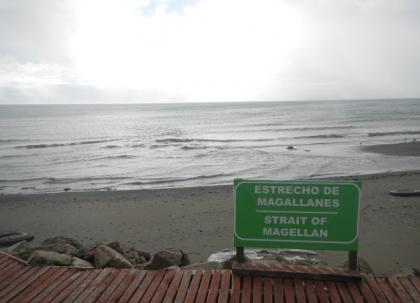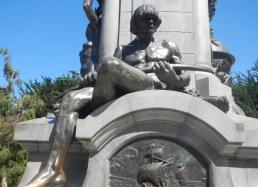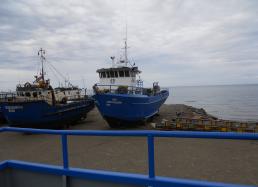Blog #1: Arrival in Punta Arenas
I just arrived in Chile—it’s my second time here collecting and identifying bryophytes from the Cape Horn region as part of an expedition funded by the National Science Foundation. Bryophytes are small plants, separated into three groups—the liverworts, mosses, and hornworts—which are descendants of the world’s earliest land plants.
Although you can find bryophytes anywhere in the woods in the United States, these tiny plants are much more abundant and diverse in the southern hemisphere. The Cape Horn region of Chile, though small, supports a significant proportion of the world’s bryophyte diversity. To experience this amazing environment, and to learn more about how and why we collect these plants, check out my "Expedition Overview: Early Land Plants of Chile" Video.
Our goal is to fully survey the region and produce books describing all the species present. The various books, guides, and databases we produce will be used both to promote educated ecotourism in the area, and to train Chilean botanists at the Universidad de Magallanes and Universidad de Concepción. Our hope is that by helping others to appreciate the amazing variety of bryophytes found in the region’s “miniature forests,” we can help support the preservation of this unique habitat, which is home to so many rare and wonderful plant and animal species.
I’m now sitting here in Punta Arenas, in my hotel room, which is in an absolute shambles. I’m sharing the room with my colleague, Blanka Shaw from Duke University, and between the two of us, we have microscopes, sleeping bags, boxes of paper packets, waterproof paper, rubber rain gear, and other collecting accoutrement scattered around our beds as we continue to buy things we’d forgotten and repack accordingly. (Check out my brief "Video Journal #2: Packing up in Punta Arenas" to see our crazed preparations.)
The entire group is here: heading the moss contingent is Bill Buck from the New York Botanic Garden, as well as my Field Museum colleague, Juan Larraín, who’ll be collecting both mosses and liverworts. The five of us all worked together on the boat last year, too, and joining us this year is: John Spence from the U.S. National Park Service, who is a worldwide specialist of the moss genus Bryum; Niels Klazenga from the Royal Botanic Gardens in Melbourne, a specialist of the moss family Dicranaceae; and Paddy Dalton from the University of Tasmania.
We’re all thrilled to be here and getting excited for the real work to begin. In two days, we’ll be leaving aboard an off-season, crab-fishing boat (see Photo #3 below) that will be our home for the next several weeks as we navigate along the Beagle Channel to reach islands south of the continental landmass. (And yes, this is the same waterway traveled by Darwin during his voyages on the HMS Beagle.)
In addition to collecting and drying samples from each locality, I’m also interested in taking photographs of specific species through a microscope. The plants I work with—liverworts—have special structures inside their cells called oil bodies. These vary in size, number, and shape across species and are really interesting characters to use in assessing the relationships between different species. These little structures also hold some powerful chemicals that have amazing medicinal uses, such as killing bacteria and fungus and fighting cancer.
Unfortunately, in most liverworts, oil bodies disintegrate very quickly once a collected plant dries out, so I’ll need to observe them under a microscope while the plants are still fresh and alive (see Photo #4 below.) This is one of my main responsibilities this year: to make sure we target as many species with previously unrecorded oil bodies as possible.
Lots to do before we leave, but I’m anxious to just get started!
Laura







